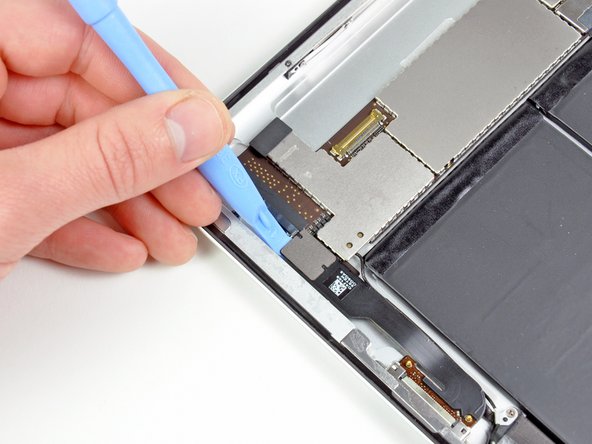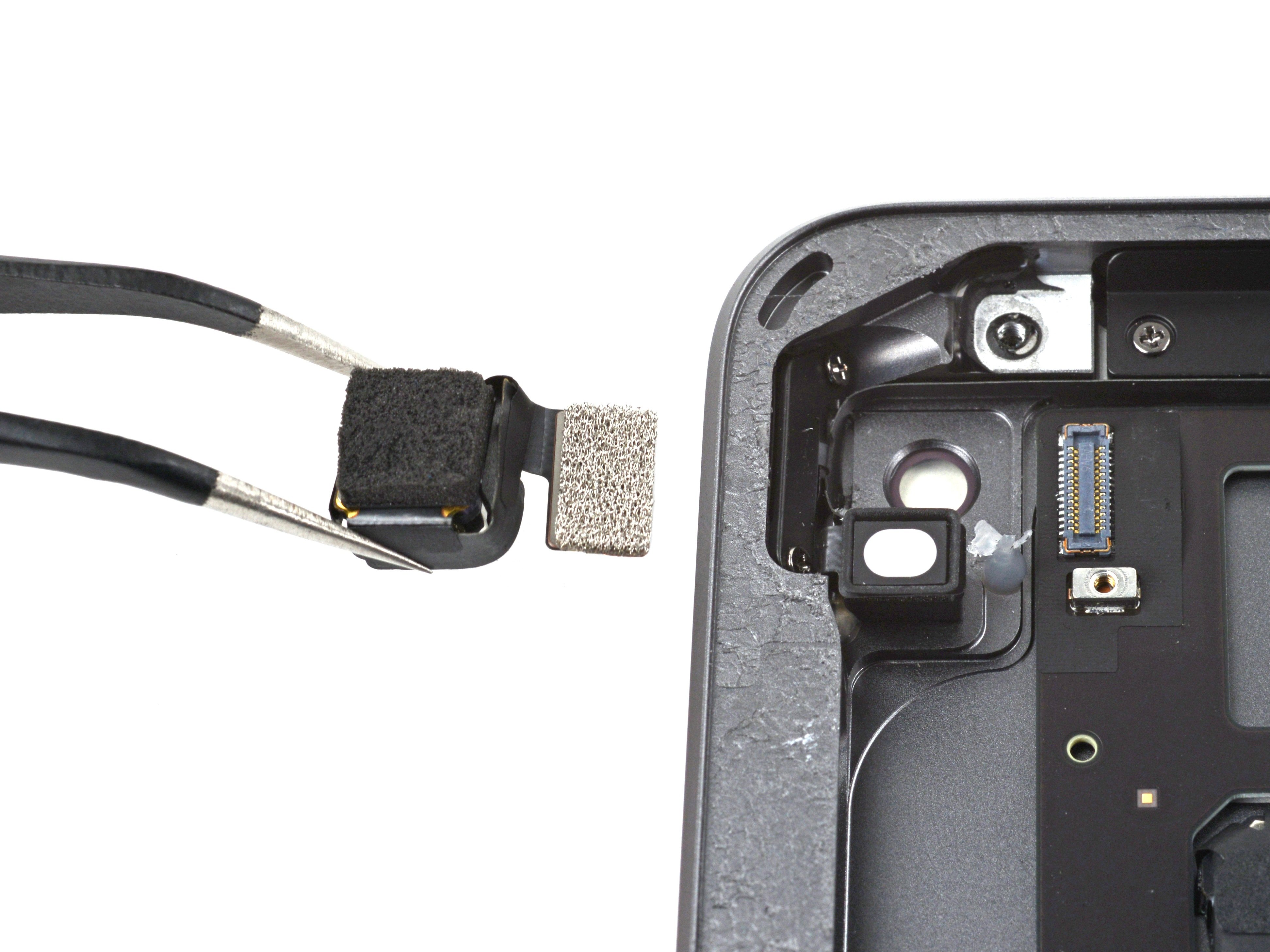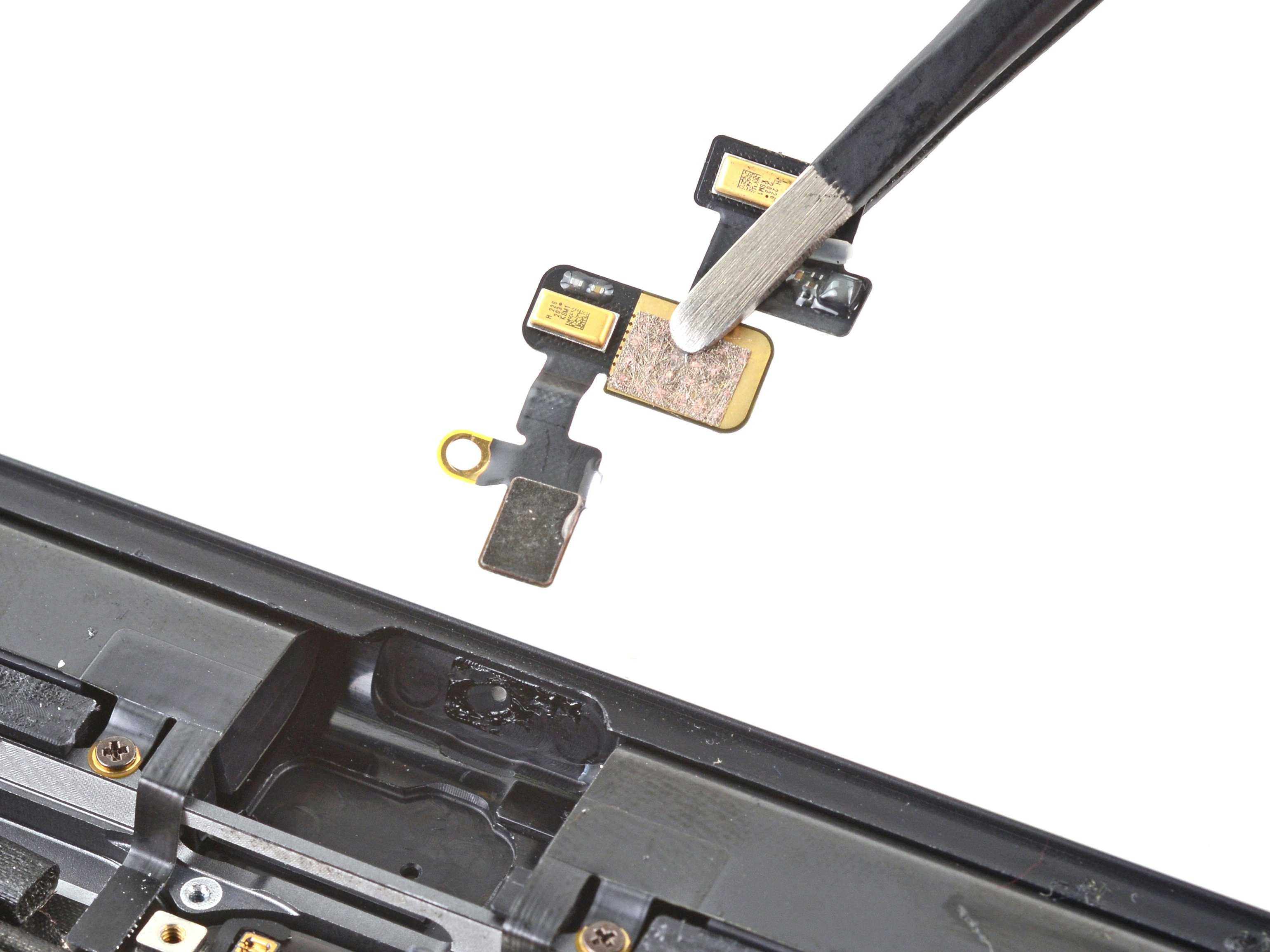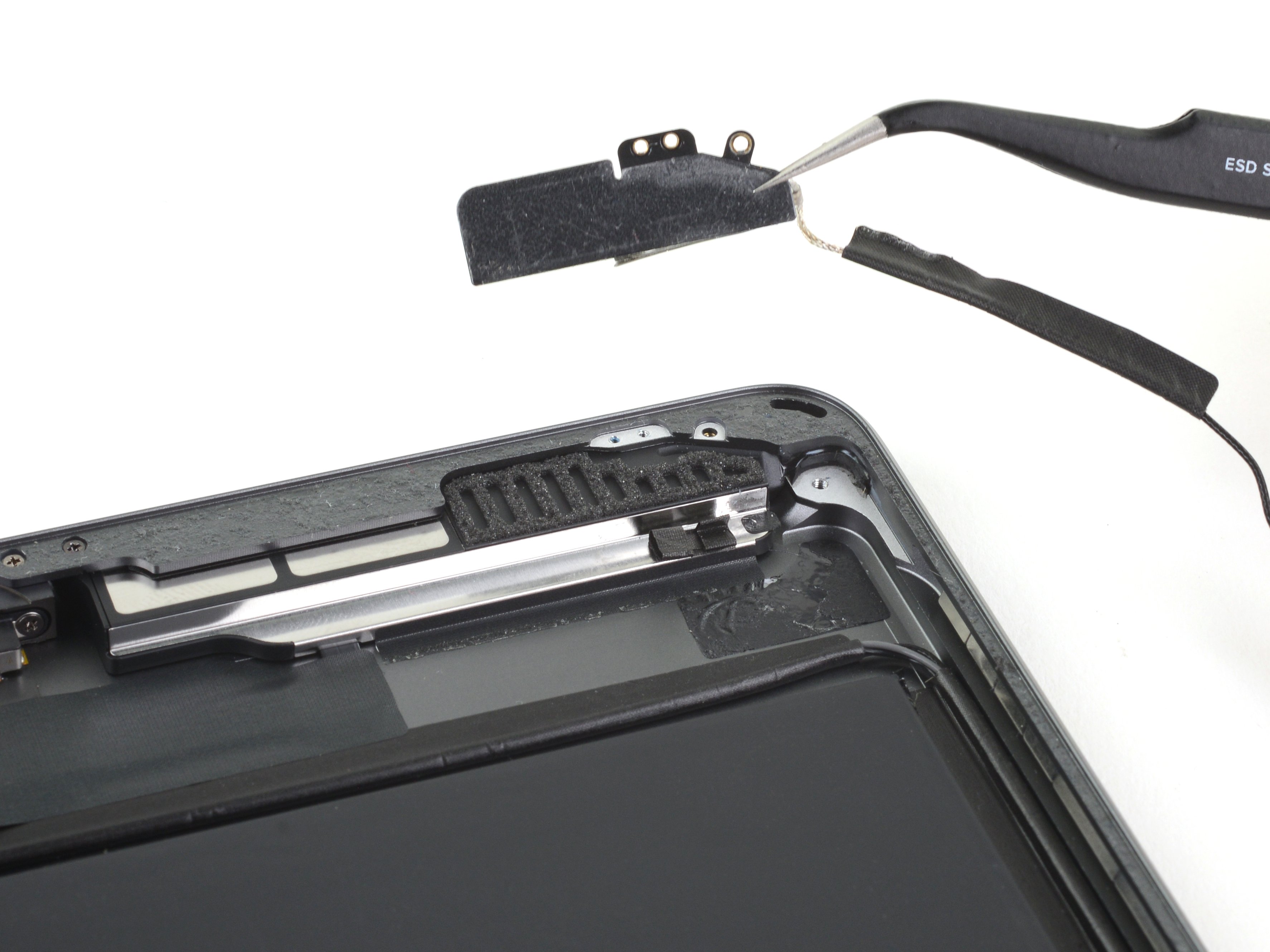DIY iPad 2 GSM Logic Board Replacement Guide: Step-by-Step Tutorial
Duration: 45 minutes
Steps: 53 Steps
Follow this guide to swap out a worn-out logic board! Keep in mind that some parts of this guide were filmed with a Wi-Fi model, so the insides might look a tad different from the cellular version. No worries though—the steps are pretty much the same for both, with a few exceptions noted along the way. If you need help, you can always schedule a repair.
Step 1
We suggest giving your microwave a little love and attention before diving in, as any leftover gunk on the bottom could end up sticking to your iOpener. Let’s keep things tidy and hassle-free!
– Pop the iOpener right in the middle of the microwave and let it warm up.
Tools Used
Step 2
Hey there! Just a quick reminder to keep the iOpener from getting too toasty during your repair session. We definitely don’t want it to pop! Make sure it doesn’t exceed 100˚C (212˚F).
If the iOpener looks a bit puffy, steer clear of it. Safety first!
If the center of the iOpener is still too hot to handle, no worries—keep using it and give it a little time to cool off before you reheat. A well-heated iOpener will stay cozy for about 10 minutes.
– Give that iOpener a warm hug in the microwave for thirty seconds.
– As you dive into the repair adventure, keep that iOpener cozy by giving it another thirty seconds in the microwave whenever it starts to cool down.
Tools Used
Step 3
Watch out! The iOpener is going to be pretty toasty, so handle it with care. Oven mitts are your friends if things get too hot to handle!
– Carefully take the iOpener out of the microwave, grabbing it by one of the flat ends to keep your fingers safe from the hot middle. Remember, safety first!
Tools Used
Step 4
Don’t have a microwave? No problem! Just pop your iOpener into some boiling water to warm it up.
– Grab a pot or pan and fill it up with enough water to give your iOpener a nice, cozy bath.
– Heat that water until it bubbles like a happy little hot spring, then turn off the heat.
– Carefully place your iOpener into the warm water for 2-3 minutes. Make sure it’s fully taking a dip!
– Use some tongs to safely fish out your heated iOpener from the water. Safety first!
– Give your iOpener a good towel dry, ensuring it’s all ready to go.
– Voila! Your iOpener is all set for action! If it needs a little more warmth, just repeat the hot water routine: boil, turn off, and let it soak for 2-3 minutes again. Easy peasy!
Tools Used
Step 5
– Grab a SIM eject tool or a trusty uncoiled paperclip and pop that SIM card tray out like a pro!
Step 6
– Gently slide the SIM tray out of its cozy home and take it out of your iPad 2.
– If you’re swapping out the SIM card, just pop it out of its tray and slide in the new one like a pro.
Step 7
Don’t forget your safety glasses to keep those peepers protected, and watch out for that LCD screen—it’s more delicate than it looks!
– If your display glass has decided to crack, let’s keep it under control and avoid any mishaps during your repair—grab some tape and stick it down!
– Apply overlapping strips of clear packing tape over the iPad’s display until it’s all covered up. Safety first, right?
– Try your best to follow the rest of the guide as outlined. Just a heads up, once the glass starts to break, it may want to keep cracking while you work. You might need to use a metal prying tool to help scoop out the pieces.
Step 8
Just a heads up, while you’re diving into this project, you might encounter some pesky broken glass. So, to keep those peepers safe from any flying bits, we highly recommend rocking a pair of safety glasses. Better safe than sorry, right?
– Place the iOpener flat against the right edge of your iPad, making sure to smooth it out for a snug fit that hugs the surface nicely.
– Give the bag a little time to work its magic on the iPad—about 90 seconds should do the trick—before you dive in to open that front panel.
Tools Used
Step 9
Getting that wedged tip of the opening tool between the glass and plastic might need a little muscle. Take your time and be gentle, giving the plastic opening tool a little wiggle back and forth as needed.
– Look closely at your iPad! You’ll spot a tiny gap in the adhesive ring at the upper right corner, about 2.0 inches (~5 cm) from the top. We’re going to take advantage of this little flaw to get started.
– Now, grab your trusty tool and line it up with the mute button. Gently slide the tip of your plastic opening tool into that gap between the front glass and the plastic bezel. Just get the very tip in there—enough to open up the crack a bit. You’re doing great!
Step 11
– With the plastic opening tool snugly nestled between the front glass and plastic bezel, gently slide a plastic opening pick into that little gap right next to your trusty tool. You’re doing great!
Step 12
– Take that plastic opening tool out of your iPad’s clutches, and gently slide the opening pick further underneath the front glass, aiming for about a half-inch depth. You’ve got this!
Step 14
The adhesive is super sticky, so you might need to put in some elbow grease. Just take your time and be gentle.
If you can spot the tip of the opening pick peeking out from under the front glass, give it a gentle tug. While it’s totally safe to have the pick that deep, it might leave some sticky adhesive remnants on your LCD. Just a little heads up!
– While the iOpener warms up the bottom edge, let’s get to work on peeling back that adhesive from the right edge of your iPad.
– Gently glide the opening pick down the edge of the iPad, letting it work its magic and release the adhesive along the way.
Tools Used
Step 15
You might want to slide that warm iOpener back onto the right edge of your iPad while you gently peel away the adhesive. Just keep in mind that this little dance depends on how cool your iPad has gotten while you were busy working your magic.
– If your opening pick is feeling a bit sticky in the adhesive, just give it a little ‘roll’ along the side of the iPad to keep loosening that stubborn glue.
Tools Used
Step 16
– Before you dive in and pop that first opening pick from the bottom corner of your iPad, slide a second pick under the right edge of the front glass to keep that sticky adhesive from making a comeback!
– Give your iOpener a little reheat love, then place it at the top edge of the iPad. You’re on your way to a successful repair!
Tools Used
Step 17
The Wi-Fi antenna is snugly secured to the bottom right corner of your iPad’s rear case with screws and a cable. Given its unique orientation, it’s super important to tread carefully—otherwise, you might accidentally cause some permanent damage to the antenna. Let’s keep it safe and sound!
– Alright, folks, it’s time to tread carefully! We’re about to release the adhesive that’s holding the antenna to the front panel. Just remember, we want to do this without causing any harm to the delicate bits connecting the antenna to the bottom of your iPad. So, follow the upcoming steps with care and confidence!
Step 18
Hey there! Just a friendly reminder: don’t slide that pick any further than the bottom right corner. You wouldn’t want to accidentally mess up the Wi-Fi antenna, right?
– Gently slide the opening pick around the bottom right corner of the iPad to free up that sticky adhesive. You’ve got this!
Step 19
Carefully slide the opening pick along the bottom right edge of the front panel. Just a heads up, the Wi-Fi antenna is chilling right by the corner, and if you’re not careful with the adhesive, it might just say goodbye!
Just a little tip! Instead of yanking that pick all the way out from under the front glass, gently pull it out so that about 1/8″ (3 mm) of the tip is still cozy under there. You’ve got this!
– Gently glide the tip of your trusty opening pick along the bottom edge of the iPad, and watch as the adhesive around the Wi-Fi antenna releases like magic.
Step 20
– After you’ve made your way past the Wi-Fi antenna (that’s about 3″ (75 mm) from the right edge, right near the home button), slide that trusty opening pick back in all the way.
– Now, gently glide the pick to the right to loosen up the adhesive holding the Wi-Fi antenna to the front glass. You’re doing great!
Step 21
Keep the iOpener’s heating sessions to a minute max, and remember to give it a cool-off break of at least two minutes before giving it another go.
If the adhesive has cooled down too much along the bottom edge, just give that iOpener a little reheat action to warm things up where you’re working. You’ve got this!
– Keep peeling away that adhesive along the bottom of your iPad! Gently pull the opening pick out far enough to navigate around the home button, then slide it back in to a depth of about 1/2 inch (10 mm) once you’ve passed that little button. You’ve got this!
Tools Used
Step 22
– Keep peeling away that adhesive along the bottom edge of your iPad like a pro.
– Make sure to tuck the opening pick snugly under the front glass close to the home button. It’s a perfect little spot!
Step 24
If your adhesive has cooled down a bit too much, just swap in a fresh iOpener along the top edge and keep on going! If your iOpener is feeling a little chilly, give it a quick reheat and you’re back in action.
– Gently glide the opening pick along the top edge of your iPad, giving it a little tug to navigate around the front-facing camera bracket.
– The adhesive in this area is quite strong, so you might need to apply a bit of elbow grease. Take your time and be careful not to slip and hurt yourself or your iPad.
– If the opening pick feels like it’s caught in the sticky stuff, try ‘rolling’ it as shown in step 9.
Tools Used
Step 25
If the adhesive is feeling warm and ready to cooperate, go ahead and take the iOpener off the iPad for a bit of convenience. But if it’s still playing hard to get, no worries! Just re-heat that iOpener and rest it on the left edge while you work your magic.
– Keep peeling back that adhesive along the top edge of your iPad, and gently maneuver the opening pick around the top left corner like a pro.
Tools Used
Step 26
The digitizer cable hangs out around 2 inches (50 mm) from the bottom of your iPad. When you’re about 2.25 inches (60 mm) from the bottom, it’s time to stop sliding that pick! You’re doing great!
– Gently glide that opening pick along the left edge of your iPad, letting it work its magic on the adhesive as you go. The adhesive here is pretty slim, thanks to the digitizer stretching across the entire left side. Just a friendly reminder: keep the pick no deeper than about 1/2 inch (10 mm) to avoid any accidental mishaps with the digitizer.
Step 27
Be super careful! The bottom of the digitizer cable is just about 1″ (25 mm) from the bottom of the iPad. Take your time and work gently to avoid cutting this cable. You’ve got this!
– With the trusty opening pick still nestled under the bottom edge of your iPad, gently coax the adhesive loose at the bottom left corner.
Step 28
– Grab one of those handy opening picks and gently lift the bottom right corner of your iPad. Once it’s popped up, use your fingers to hold it steady. You’ve got this!
Step 29
Watch out for any stubborn adhesive that might still be clinging on, and grab an opening pick to gently slice through any glue that’s keeping the front panel in place.
– Grab your iPad by the top and bottom right corners and gently twist the front glass away from the device. Easy peasy!
– When you’re putting everything back together, give that LCD a little love! Use a microfiber cloth and some compressed air to whisk away any pesky dust or fingerprints before you seal the glass back on.
Step 30
– Time to get your screwdriver ready! Unscrew those four 2.0 mm Phillips screws that are holding the LCD snugly in the rear case. Let’s free that screen!
Step 31
– Gently lift the LCD from the edge closest to the volume buttons and swing it out of the rear case like a pro.
– Carefully lay the LCD down on the front panel, just like you see in the second picture.
Step 32
Just a friendly reminder: make sure you’re gently lifting those hinged retaining flaps and not the sockets themselves. You’ve got this!
Check out the second picture where the retaining flaps are marked in a bright red hue for your convenience!
– Gently use the edge of a plastic opening tool to lift the retaining flaps on the two digitizer ribbon cable ZIF sockets. You’ve got this!
Step 33
– Grab your trusty plastic opening tool and gently slide it along the edge to lift that digitizer cable away from the shields on the logic board. You’ve got this!
– Now, take it easy and carefully pull the digitizer cable away from the sticky adhesive that’s holding it to the side of the rear case. Smooth moves!
Step 34
– Gently tug the digitizer ribbon cable straight out from its cozy spots on the logic board. You’ve got this!
Step 35
To get that front panel assembly off, you’ll need to gently slide the ribbon cable out from between the case and the LCD. Just give the LCD a little nudge to create some space, and you’ll be all set!
– Gently lift the LCD from its long edge that’s away from the digitizer cable and smoothly flip it towards the rear case—think of it like closing a book with care.
– While you’re holding the LCD up, gently slide the front panel away from the iPad. Just be cautious not to catch the digitizer cable on the rear case or LCD; it’s a delicate dance!
Step 36
To dive into the iPad’s inner workings, we first need to gently pop the LCD out of its cozy case.
– Gently lift the LCD from the edge nearest to the volume buttons and flip it out of the rear case—think of it like turning a page in your favorite book!
– Carefully place the LCD face down on a clean surface. A soft cloth works wonders to keep it scratch-free and cozy.
Step 37
Remember, when you’re unplugging that connector, give it a gentle wiggle and don’t yank it straight up!
– Gently place the LCD right next to the rear panel, giving them some space to breathe.
– Grab a plastic opening tool and nudge that display data cable lock upwards like you’re lifting a tiny weight.
– Carefully wiggle and pull the display data cable out of its cozy little socket.
Step 38
– Gently detach the LCD assembly from the rear panel assembly. Remember, a little finesse goes a long way!
Step 39
– If you’ve got one, grab a plastic opening tool to gently lift off that pesky tape covering the dock connector cable. It’s like peeling back the curtain on a little surprise!
– Next, use the edge of your trusty plastic opening tool to carefully nudge the dock connector cable’s connector upwards from its cozy spot on the logic board. Think of it as giving it a little lift!
– Now, it’s time to peel that dock connector ribbon cable away from the rear panel. Just like unwrapping a gift, but way more techy!
Step 40
– Gently lift the speaker cable connector straight up from its cozy spot on the logic board. You’ve got this!
Step 41
Make sure you’re gently prying up on the hinged retaining flap, not the socket itself. You got this!
– Grab your trusty plastic opening tool and gently lift the retaining flap on the headphone jack and front camera cable ZIF socket. You got this!
– Now, peel the headphone jack and front camera cable off the rear case like a pro. Easy peasy!
Step 42
– Gently wiggle the headphone jack and front camera ribbon cable and pull it straight out of its cozy socket on the logic board. You’ve got this!
Step 43
Be sure to keep that cable steady and avoid pulling it up while disconnecting. You’ve got this!
– Grab your trusty plastic opening tool and gently nudge the retainer that’s keeping the upper component board cable connector snug in its socket on the logic board. It’s like giving it a little high-five!
– Once it’s up, give the connector a gentle tug and free it from its cozy spot on the logic board. You got this!
Step 44
– Carefully take out the three 2 mm Phillips screws holding the SIM card slot snugly against the rear panel.
Step 45
– Let’s get those two 2.9 mm Phillips screws out of the way that are holding the headphone jack to the top edge of the rear panel. You got this!
Step 46
– Grab your trusty plastic opening tool and gently coax the headphone jack out of its cozy spot nestled in the top of the rear panel.
– Carefully peel the headphone jack/SIM slot assembly away from the top edge of the communications board. You’re almost there!
Step 47
– First up, let’s tackle those two 2.1 mm Phillips screws that are keeping the logic board bracket cozy with the rear case near the digitizer cable socket. Unscrew them with care!
– Once those screws are out of the way, gently lift the logic board bracket off the rear case. You’ve got this!
Step 48
– Let’s get those four 2.6 mm Phillips screws out of the way! They’re holding the logic and communications boards tight against the rear panel, so grab your trusty screwdriver and give them a turn.
Step 49
– Gently nudge the logic board upward with the edge of a plastic opening tool to detach it from the sticky adhesive that’s holding it snugly to the rear case.
Step 50
Hold your horses! You don’t want to yank this out just yet. There are still three antenna cables holding on for dear life.
– Gently lift the logic board out from the rear case and give it a little twist towards the battery. You’ve got this!
Step 51
– Grab a trusty plastic opening tool and gently pry away those antenna connectors from their cozy sockets on the communications board. You’ve got this!










































































































